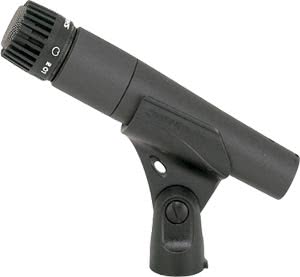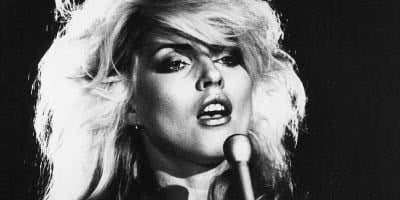While there’s every indication that Harts is set to be one of Australia’s next major rock exports, this talented Melbourne-based singer and songwriter’s approach to making music is surprisingly thrifty and DIY.
For one thing, he still plays an old Squier Stratocaster, the much-maligned six-string beloved by guitar beginners the world over. As far as he’s concerned, it gets the job done and he can’t get over the artwork applied by his friend.
The quirks don’t stop there. While his records are big, beefy testaments to a time when rock and roll was still mystical and held grandeur, Harts is more interested in what he can do with a mic and an amp than millions of dollars’ worth of studio equipment.
To find out more about the gear that this swiftly rising rocker couldn’t live without, we caught up with Harts, ahead of the release of his new Breakthrough EP and supporting tour, which kicks off this week at Rocket Bar in Adelaide.
Back To Basics
My essentials would be my guitar, so I’d probably get an electric guitar, my  keyboard would be a Korg R3, which is a kind of virtual analog synthesiser, and some sort of loop machine, like maybe a Boss loop machine, with multiple inputs, so I can loop the keys, play bass on the keys and loop the guitar over it.
keyboard would be a Korg R3, which is a kind of virtual analog synthesiser, and some sort of loop machine, like maybe a Boss loop machine, with multiple inputs, so I can loop the keys, play bass on the keys and loop the guitar over it.
I would probably also bring a drum machine as well. I’m not sure exactly what type, because all of my drum machines have custom samples on them anyway, but maybe a laptop with Addictive Drums on it or maybe EZdrummer, something with more of a live kind of sound.
The Axe
I play a Squier Stratocaster, which is the cheapest guitar on the market. The reason why is because I got it painted by a friend of mine, this particular guitar, and I really loved the paint job that he did on it, so I wanted to play it live, and it was a Squier Strat.
To be honest, a lot of people ask me why I play Squiers and not Fenders or why the cheaper models. It’s just kind of what I’ve gotten used to. I never could afford a Fender when I started, so I just got used to playing the cheaper ones and learning how to get the best sound from those cheaper ones.
Learning what you can get away with and more importantly what you can’t get away with on those cheaper ones was an important part of my development.
It’s as is. It’s a Squier Affinity Strat, with the fat headstock. I don’t think they make those anymore, but I bought it a few years ago. There’s no changes, it’s stock standard what you’d probably go into a store and buy for about $150, $200.
Getting Away With It
In my opinion, the neck pickup — and this might change depending on the actual  make of the Squier — but the neck pickup is really good and I think you can get away with making it sound like a Strat with the neck pickup and actually the bridge pickup, too.
make of the Squier — but the neck pickup is really good and I think you can get away with making it sound like a Strat with the neck pickup and actually the bridge pickup, too.
But the middle pickup is not so good and the changes between the neck and the middle and the middle and the bridge, those switches don’t sound good at all. So it’s more about finding the right setting and knowing you can’t really go onto those other settings even if you wanted to, and to be honest I don’t really need to, because the Stratocaster is so versatile.
Experimentation
I had a traditional pedalboard with all the different kinds of pedals that I need for my sound, but just the logistics of taking that on planes and things like that [was too difficult].
I already have a whole bunch of equipment just for my own live show, I was paying so much for excess baggage, it’s changed now that I have some deals with Virgin, they give you musician baggage allowance, but before I didn’t really know about anything like that.
So I really had to simplify my setup and find the right gear that was really light and that’s able to travel and not break. So I’ve changed from pedalboards to multi-effects units. So I use Zoom Multi Effects units and with the right amount of tweaking, I really like them.
They’re clones of the Big Muff and Fuze Face and compression pedals and digital delays, and it sounds really good if you just spend the time tweaking it. It’s so much easier to set up at a gig when you’ve only got 10 minutes to set up.
Gear vs Songwriter
The gear doesn’t really influence the songwriting, because the songwriting doesn’t really rely on my gear. I just kind of go with what I’m feeling for the song or what I have in mind. I don’t really loop anything. I play bass or drums or keyboard and layer it down like a traditional band would.
That doesn’t really influence my songwriting, but it does influence the recording process, because you can’t change the sound of the guitar that much. You can always process it, add you fuzz and delays, but essentially the sound is coming from the same source, so the recording process is limited to what instruments you have and what you can use to make sounds.
Tricks of the Trade
I think a lot of it is just people knowing how to mic and amp properly, because a lot of people that I see, they just stick an SM57 (mic) in the middle of the cone.
There’s nothing wrong with that, you can get away with that, but if you’re going for like the big tones or the fuzz that I like on my records, the really wide fuzz that covers the whole spectrum of the recording, you really have to experiment how to get really bassy tones or how to capture the stereo field of that amp.
And you don’t necessarily need two mics to do it, it’s just in how you go about using your gear.
Fetishising Equipment
When you’re first starting out, you’re always looking for, “Oh, what else can I do or get?” instead of actually learning the instrument. You’re kind of more focused on what cool stuff you can do, and there’s so many pedals out there these days that can make your guitar sound like whatever you want.
You can even add MIDI pickups to your guitar and play keyboard with your guitar, there’s so much you can do. And I think maybe some of the people starting out get caught up with what you can do instead of what you should do, which is learning your instrument. But I understand it, because it’s cool, it’s cool what you can do with your guitar.
The Problem Solver
I always have to use a lot of noise suppression and noise gating on my guitar signal and sometimes on the bass signal, and that’s another problem with the Squier, actually, it feeds back a lot.
So you kind of really have to gate it if you’re driving the amp and the fuzz really hard, because that’ll come back in your monitors on stage and that’ll go through your guitar and everything will start squealing. So a lot of noise gating and noise suppression helps me get a really clean fuzz tone and helps tame the monster.
Harts will unveil his ‘Breakthrough’ EP this Friday, 5th June. See him live when he kicks off his national ‘Breakthrough’ tour at the Rocket Bar in Adelaide this Friday – see full tour details here.




































